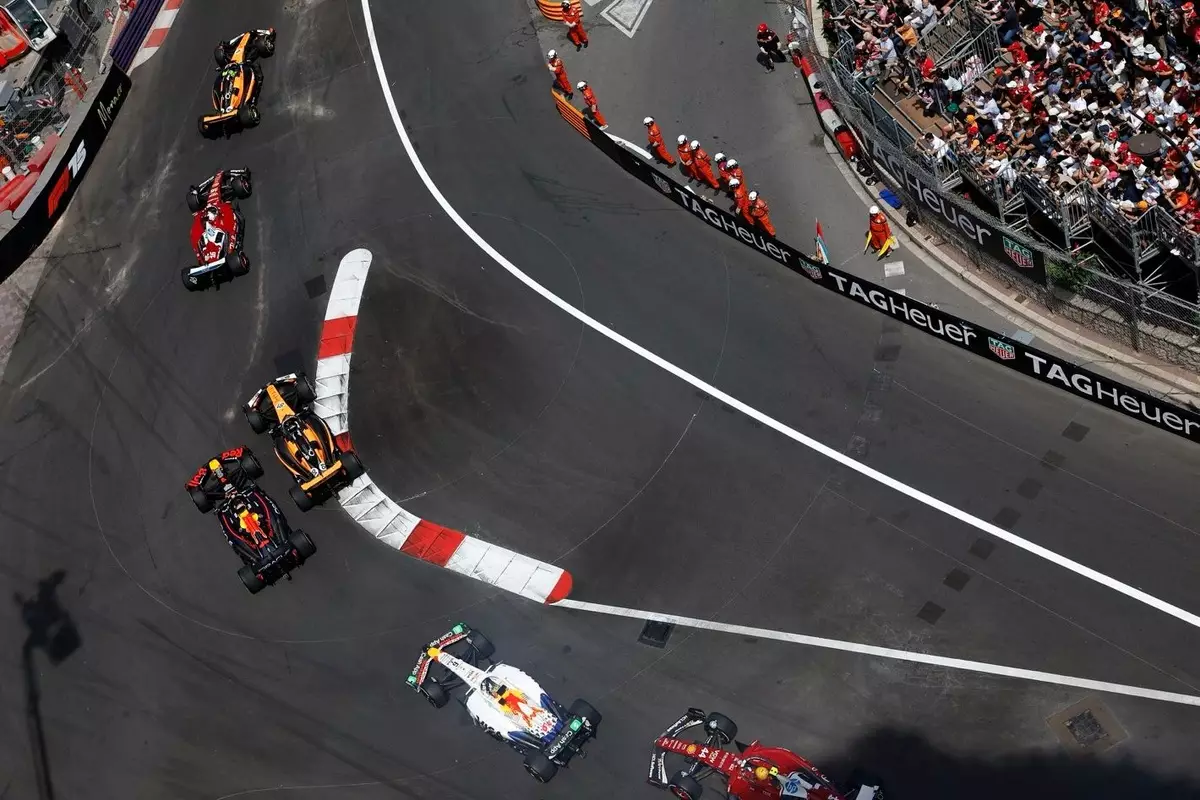The Monaco Grand Prix, a cornerstone of the Formula 1 calendar, has been criticized for its repetitive processional nature in recent years. While its glitzy reputation often overshadows the monotony observed on the track, George Russell’s candid remarks highlight a growing sentiment among drivers and fans alike. The radical changes proposed by F1 and the FIA focused on the introduction of a three-tyre set strategy aimed at injecting excitement into the race. However, this bold move resulted in minimal changes to race outcomes, raising questions about the effectiveness of these experimental rules.
Russell’s frustration during the race encapsulates the broader issues facing Monaco. The way some teams manipulated race dynamics, particularly the strategic slowing of drivers, only exacerbated the situation. It became apparent that merely altering the tire strategy was insufficient. The Monaco circuit, with its narrow streets and unforgiving turns, no longer seems conducive to the thrilling overtakes and strategic battles that F1 purists crave.
Time for a Fundamental Shift
George Russell’s call for a more profound overhaul of the Monaco Grand Prix format resonates deeply in a sport that prides itself on innovation. The notion of transforming the traditional race into what he termed a “qualifying race” format merits serious consideration. By rewarding drivers based on their qualifying positions on both Saturday and Sunday, the race weekend could capitalize on the sheer exhilaration qualifying brings—a sentiment shared by fans and drivers alike.
A dual qualifying event not only has the potential to enhance the spectacle but could also reduce the frustration players encounter in the race. Drivers would be incentivized to push their limits during qualifiers, culminating in a more competitive and entertaining experience. Additionally, the prospect of earning points based on both qualifying sessions may add a strategic layer to the weekend that the traditional race format lacks. In essence, it could revitalize the entire Monaco experience by placing a premium on the art of qualifying—one of the most thrilling aspects of F1.
The Challenges of Circuit Limitations
Despite the allure of new formats, one has to consider the inherent challenges of the Monaco circuit itself. It is a track that penalizes mistakes severely and offers limited overtaking opportunities. Russell’s tongue-in-cheek reference to fielding an F2 car exemplifies the increasing concern that skill is diluted on a circuit where pace alone is often insufficient for exciting racing. The narrow streets of Monte Carlo may have drawn in luxury-seeking audiences, but they leave the cars severely restricted in their ability to showcase the true spectacle of Formula 1 racing.
One cannot help but feel that the longer this experiment with tire regulation continues, the more stale the Monaco experience becomes. As Russell rightly acknowledges, the thrill of driving full speed on such an iconic circuit is one of the few joys left. The challenges of driving “four seconds off the pace” are magnified under the current restrictive format. It would seem that the majestic beauty and history of Monaco are outshined by the very limitations that once made it a jewel in F1’s crown.
Excitement Amidst Frustration
Interestingly, Russell’s account of the latter stages of the race reveals a critical juxtaposition: the enjoyment of pushing one’s car to the limit amidst a backdrop of dissatisfaction with the structure of the race. His decision to bypass Albon by straight-lining the chicane—even at the cost of incurring a penalty—speaks volumes about the driver’s desire to reclaim excitement where the race format has deprived it. In a sense, the act of driving swiftly and recklessly through Monaco’s streets embodies the spirit of a sport that thrives on competition and heroism.
While the 2022 and 2023 wet races briefly injected some thrill into the proceedings, they serve as a stark reminder that weather-related incidents should not be the crutch upon which race excitement leans. F1 needs to foster an environment where excitement is intrinsic, not incidental. By reconsidering the fundamental structure of the Monaco Grand Prix, F1 has the opportunity to reignite the passion for one of the world’s most renowned circuits, ensuring that it continues to captivate audiences and competitors alike for generations to come.

